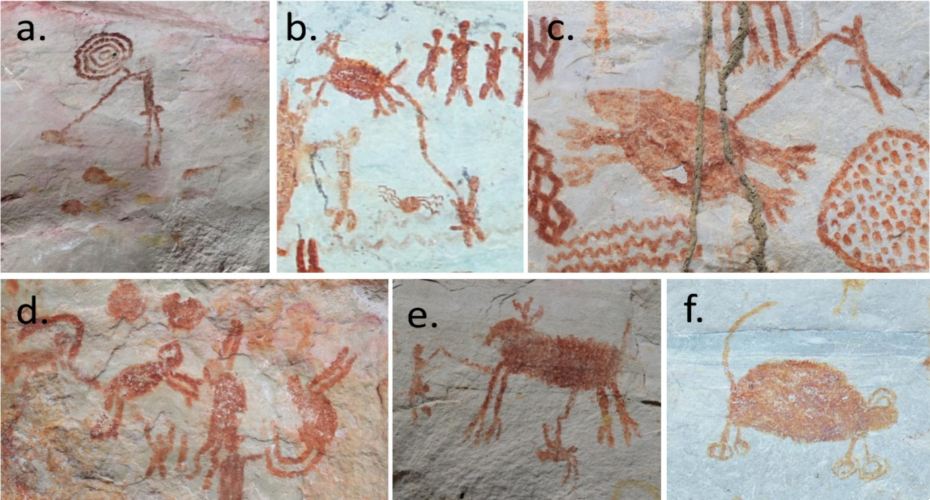When people first set foot in the Amazon Basin thousands upon thousands of years ago, they were greeted by countless never-before-seen animal species. Remarkably, a smattering of the early encounters between humans and beasts were documented in the ancient rock art of Colombia.
In a new study, researchers report the wealth of animals depicted in the 12,500-year-old rock art of Serrania de la Lindosa in the Colombian Amazon, including a diverse collection of monkeys, fish, birds, and deer.
This, they say, shows the earliest-known humans in the region had a deep and intimate knowledge of the wildlife around them, as well as the complex ecosystems they inhabit.
“The Indigenous people of Cerro Azul and the surrounding lands hunted and depicted a diverse array of animals from different ecologies – from aquatic fish to arboreal monkeys; terrestrial deer to aerial birds, both nocturnal and diurnal,” Dr Javier Aceituno, study author from Universidad de Antioquia in Colombia, said in a statement.
“They had intimate knowledge of the various habitats in the region and possessed the relevant skills to track and hunt animals and harvest plants from each, as part of a broad subsistence strategy,” he explained.
The region’s rock art has been known for some time, but archaeologists have struggled to study it due to the treacherous terrain and political unrest. However, following a peace agreement between the Colombian government and the guerrilla group FARC in 2016, the area has become more accessible to researchers.
A total of 3,223 images were cataloged in Serrania de la Lindosa, around 58 percent of which were figurative images that depicted forms from the visible world, as opposed to geometric shapes or abstract patterns.

Images of potential a) fishing; b, c, e) hunting; d) monkey leaping/transforming sequence; f) and an unknown animal with circular feet and curved head elements.
Image credit: University of Exeter
Some of the figurative images showed people and plants, but the majority were non-human animals. In total, the researchers identified at least 22 different animals, including deer, birds, peccary, lizards, turtles, tapir, snakes, caimans, and crocodiles. A few fishing scenes were also present, although no fish were explicitly illustrated.
Strangely, there were also no depictions of jaguars, the iconic big cats that played a significant role in later civilizations of the Amazon. It’s unclear why this charismatic creature is missing from the artworks, although it may speak to the spiritual significance of jaguars. In an epoch with no strict boundaries between the human world, the animal world, and the supernatural, perhaps it was considered foolish or disrespectful to doodle the image of a ferocious predator.
“These rock art sites include the earliest evidence of humans in western Amazonia, dating back 12,500 years ago. As such, the art is an amazing insight into how these first settlers understood their place in the world and how they formed relationships with animals,” added Dr Mark Robinson, Associate Professor of Archaeology at the University of Exeter.
“The context demonstrates the complexity of Amazonian relationships with animals, both as a food source but also as revered beings, which had supernatural connections and demanded complex negotiations from ritual specialists,” said Dr Robinson.
The new study is published in the Journal of Anthropological Archaeology.
Source Link: Rock Art Shows Early Humans In South America's Contact With New World's Animals